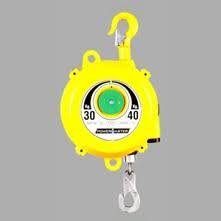Amazing mechanical devices known as spring balancers have transformed worker productivity in a wide range of industries. With the help of these clever devices, heavy machinery can operate in a weightless environment, handling large objects with unexpected ease and accuracy. Understanding the spring balancer working principle will enable you to appreciate their intricate engineering and choose wisely when to use them in your office.
1. The Foundation: Internal Spring Mechanism
Every spring balancer is based on a nearly precisely calibrated coil spring system that both temporarily stores and transmits mechanical energy. Regardless of the placement of the tool, the spring is always maintained at a certain tension over the entire range of operation and can ensure consistent support. This basic idea turns bulky, heavy machinery into instruments that appear weightless and react to the operator’s touch with ease.
2. Precision Control Through Adjustable Tension
With the help of advanced adjustment mechanisms, users of modern spring balancers can precisely modify the counterbalancing force. These systems usually incorporate threaded adjustment screws or graded dials to change the preload tension of the spring. Operators can attain perfect equilibrium by precisely tuning this tension to match the weight of the hung tool. This flexibility maintains safe and reliable operation by preventing tools from floating upward impulsively or falling suddenly.
3. Safety First: Built-in Protection Systems
Several safety precautions are built into spring balancers to guard against mishaps and shield workers and equipment from possible dangers. These include automatic locking systems that activate in an emergency and backup safety cables that capture tools in the event that the primary mechanism malfunctions. A lot of models also have overload protection, which guards against damage from too much weight, and smooth-running guiding systems, which guarantee regulated movement free from potentially harmful drops or jerks.
4. Smooth Operation Through Cable Management
In spring balancers, the cable system is essential for converting the energy of the spring into controlled, smooth tool movement. To ensure uniform force distribution across the operating range, premium steel wires are wound around precisely machined drums. These cables travel via precisely engineered guide systems that ensure smooth tool movement in all directions by removing friction and preventing binding. These cable systems require routine maintenance to function at their best and last a long time.
5. Real-World Performance in Manufacturing Excellence
The spring balancers have an unrivalled flexibility and suit all sorts of industrial environments, including sensitive electronic equipment as well as car assembly lines. They operate in high-efficiency environments in scenarios which require repetitive use of tools, which increase productivity and reduce operator fatigue significantly. They are essential in contemporary industrial facilities due to their capacity to support tools of different weights.
Conclusion
The ideal marriage of mechanical engineering and useful workplace solutions is represented by spring balancers. Their sophisticated design upholds the greatest safety standards while converting difficult manual jobs into simple procedures. You can better appreciate how spring balancers contribute to safer, more effective, and more comfortable working conditions by being aware of these five basic concepts. Whether you’re working with a spring balancer 10 kg capacity or handling heavier equipment, these amazing gadgets keep proving their value in a variety of industries, showing that often the most stunningly simple solutions also happen to be the most effective.


